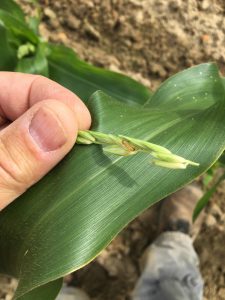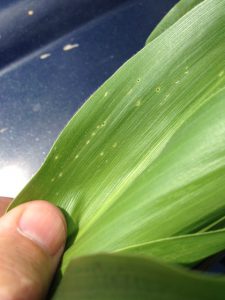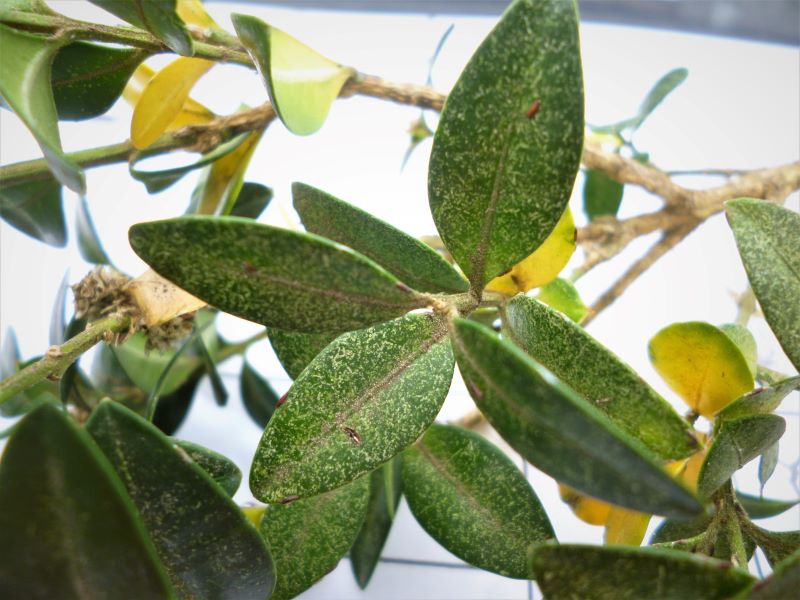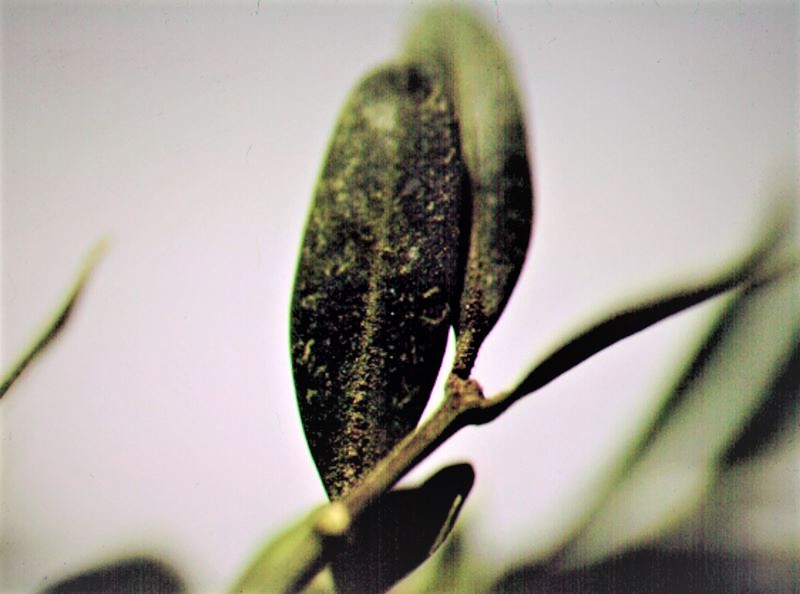Rutgers NJAES Wine Grape Extension, in association with Penn State Extension Grape and Wine Team, is calling on those who own, operate, or manage a farm or vineyard in the New Jersey region to participate in a survey that aims to track the spread and severity of nymph and adult spotted lanternfly populations during the 2023 season. The data collected will provide insights into the distribution patterns of both nymph and adult SLF within and outside vineyards, enabling growers and researchers to better understand this invasive pest’s potential impact on agriculture in the Mid-Atlantic region. [Read more…]
Archives for June 2023
Vegetable IPM Update 6/07/23
Sweet Corn
Warmer evening temperatures have resulted in modest increases in European corn borer (ECB) moth catches in blacklight traps in the northern and central counties. Whorl corn is the primary target for egg laying, and injury over the 12% threshold has been found in Hunterdon County this week. It is likely that there are pockets of feeding throughout the southern counties. Despite relatively low numbers, this pest still poses a threat to plantings now approaching full tassel. It is typical for feeding percentages to rise as the moth catch declines. We expect feeding to increase for the next 1-2 weeks before peaking.
 Look for the characteristic “shot-hole” type of feeding (photo below at right) and consider treating when infested plants exceed 12% in a 50 plant sample. As plantings proceed to the pre-tassel stage, ECB larvae may be found in emerging tassels (see photo at left). It is a good idea to treat individual plantings as they move into the full tassel/first silk stage one time. This eliminates any ECB larvae that have emerged with the tassels as they begin to move down the stalk to re-enter near developing ears.
Look for the characteristic “shot-hole” type of feeding (photo below at right) and consider treating when infested plants exceed 12% in a 50 plant sample. As plantings proceed to the pre-tassel stage, ECB larvae may be found in emerging tassels (see photo at left). It is a good idea to treat individual plantings as they move into the full tassel/first silk stage one time. This eliminates any ECB larvae that have emerged with the tassels as they begin to move down the stalk to re-enter near developing ears.
Useful insecticides for this particular application include synthetic  pyrethroids (IRAC Grp 3), spinosyns (including OMRI approved Entrust) IRAC Grp 5), and diamides such as Coragen or Vantacor (IRAC Grp 28) or materials such as Besiege which include the active ingredient in Coragen. Synthetic pyrethroids alone should NOT be used for corn earworm (CEW) protection on silking corn. Control with these materials is very inconsistent.
pyrethroids (IRAC Grp 3), spinosyns (including OMRI approved Entrust) IRAC Grp 5), and diamides such as Coragen or Vantacor (IRAC Grp 28) or materials such as Besiege which include the active ingredient in Coragen. Synthetic pyrethroids alone should NOT be used for corn earworm (CEW) protection on silking corn. Control with these materials is very inconsistent.
The highest nightly trap catches of ECB for the week ending 6/07/23 are as follows:
| Sergeantsville 2 | Oldwick 1 |
| Asbury 1 | Port Murray 1 |
| Hillsborough 1 | South Branch 1 |
Tree Fruit IPM Report for 6/3/2023
Peach:
Bacterial Spot: Generally we recommend starting at 0.5 ozs metallic copper and gradually lowering the rate as the season progresses. The rate applied will depend on the formulation. Dr. Lalancette published a chart listing common copper formulations and rates for peach and nectarine applications. Avoid combining copper with captan especially if it has been overcast for several days. Also avoid acidic spray solutions when applying copper. Dr. Lalancette has published a handy guide for copper applications in early covers. Antibiotics such as Mycoshield or Fireline may also be used and may offer slightly more residual activity during long wetting periods. Bacterial Spot leaf symptoms began appearing in southern county orchard during the week of 5/8. These infections probably occurred mostly during the heavy rains that occurred on 4/30-5/1. Fruit symptoms from this set of infections have begun to appear in southern counties. So far fruit symptoms are very low and only in highly susceptible varieties.
Oriental Fruit Moth: A biofix point for OFM was set on 4/10 in both northern and southern counties. All timings for first generation OFM have past.
| OFM 2nd Generation Timing | |||
| Insecticide Type | |||
| County/Region | Degree Days by 6/2 base 45 | Conventional
1450-1500 |
Diamide
1300-1400 |
| Gloucester – Southern | 769 | 1st –too far off
2nd – too far off |
1st –too far off
2nd – too far off |
| Middlesex – Northern | 742 | 1st –too far off
2nd – too far off |
1st –too far off
2nd – too far off |
Plum Curculio; Tarnished Plant Bugs; and Other Catfacing Insects: Plum Curculio start to move into orchards at about 88-100 degree days base 50 after January 1. Applications for PC should be initiated once all petals are off, with a second application made with ovicidal materials at 379-402 DD. Additional applications with effective materials may be made between 520 and 730 DD base 50. Currently we have accumulated about 619 DD base 50 in southern counties, and 546 DD base 50 in northern counties. Growers can monitor degree day development at their site by finding the nearest weather station and using the degree day development tool at NEWA. Catfacing insects are active, and activity is increasing with dry weather and summer temperatures. Very little recent fruit feeding has been observed.
Scale Insects: White peach scale crawlers should be at peak crawler emergence in southern counties. San jose scale crawlers have begun emergence this past week. SJS typically begin emergence about late May or Early June and continue emergence for up to 6 weeks. Control options during crawler emergence include Neonicitiniods (suppression only), and the IGR’s Esteem and Centaur. See the NJ Commercial Tree Fruit Production Guide and the product labels for more information.
Apples and Pears:
Diseases: Now that primary scab has ended, the focus turns toward summer diseases such as fruit rots (esp. Bitter rot), and sooty blotch and fly speck. Bitter rot control has been difficult at best in recent years even where management programs have been rigorous. Research has suggested Products such as Merivon, Luna Sensation and Inspire Super may be effective, and longtime reliable broad spectrum fungicides such as captan and ziram should provide control. Experience has suggested that the addition of phosphorous acid products such as Prophyt or Rampart to captan sprays may improve control. Observations are that these products improve control of other summer diseases such as sooty blotch and flyspeck, and may help suppress scab infections where present.
Fire Blight: Fire Blight symptoms began appearing in southern county apple and pear orchards the week of 5/1. Typically it is recommended to cut out infected limbs however this is a practical decision that must be made. This blog post from Michigan State may be helpful to decide whether it is worth cutting out infected tissue. Once the terminal buds set, typically in July, infected wood should be removed to prevent colonization by the bitter rot pathogen.
Codling Moth (CM): The first codling moth flight has started. A biofix was set for CM on April 17th in both northern and southern counties.
| Codling Moth Degree Day Timing | ||||||||
| Application and Insecticide Type | ||||||||
| County Area | Biofix | Rimon:
75-100DD + 14-17 days later
|
Intrepid
150 + 450 DD Diamides – Altacor, Voliam mixes: (150-200 DD) |
Cyd-X, Carpovirusine
250 DD + every 7-9 days during brood hatch (later if first spray is an IGR) |
Standard Insecticides – Delegate, Avaunt, OP’s, carbamates, pyrethroids
250 DD + 550 DD
|
|||
| DD | 75 | 100 | 150 | 450 | 250 | 250 | 550 | |
| Southern | April 17 | past | past | past | 6/7 | past | 5/21 | 6/13 |
| Northern | past | past | past | 6/7 | past | 5/23 | 6/14 | |
Tufted Apple Budmoth (TABM): A biofix for TABM was set in southern county orchards on 5/8. Nothing needs to be done for TABM at this point. The first alternate middle applications for TABM will be on or about 6/12 in southern counties. This has been considered a minor pest in recent years. Many materials used for Codling Moth will also control TABM.
Pear: Second generation pear psylla began hatching about 5/15. Options for control include spynosyn products such as Delegate and Entrust, and the neocitinoids (IRAC group 4A). The addition of 0.25-1 gal of summer oil may improve control. Other options include Movento, the IGR’s Esteem and Centaur, and products containing abamectin. Be sure to read and follow the label instructions regarding the addition of penetrants for abamectin products. Pear Psylla are still actively laying eggs and nymphs continue to hatch.
Grape: Early blooming native grapes were at 50% bloom on 5/24, therefore we have set the the Grape Berry Moth biofix at 5/24 for southern counties. Typically we would use the bloom date for V. riparia to set the biofix date, however the usual locations we have used in the past did not have viable vines to look at, and it is difficult to scout new locations for V. riparia this year. Since V. riparia typically blooms with early natives we used Concord and Ives to set the biofix. The model works best when growers record their own bloom dates and use the Grape Berry Moth model at NEWA. Applications for GBM using Intrepid or Diamides should be made at 810 DD base 47. Other effective materials can be applied a few days later. Currently we are at 167 DD in southern counties. Applications have been historically made around the end of June in southern counties.
Tree Fruit Trap Captures – Southern Counties
| STLM | TABM-A | CM | BMSB | OFM-A | DWB | OFM-P | TABM-P | LPTB | PTB | |
| 4/15/2023 | 433 | 20 | 1 | |||||||
| 4/23/2023 | 423 | 1 | 13 | 8 | 4 | |||||
| 4/30/2023 | 417 | 7 | 15 | 4 | 1 | 0 | ||||
| 5/06/2023 | 9 | 2 | 3 | 1 | 0 | 0 | ||||
| 5/13/2023 | 18 | 2 | 7 | 2 | 3 | 0 | 6 | 6 | ||
| 5/20/2023 | 5 | 18 | 6 | 0 | 51 | 0 | 13 | 67 | ||
| 5/27/2023 | 1 | 11 | 4 | 0 | 17 | 0 | 11 | 49 |
Tree Fruit Trap Captures – Northern Counties
| STLM | TABM-A | CM | BMSB | OFM-A | DWB | OFM-P | TABM-P | LPTB | PTB | |
| 4/8/2023 | 10 | |||||||||
| 4/15/2023 | 20 | 3 | ||||||||
| 4/30/2023 | 28 | 11 | 6 | |||||||
| 5/06/2023 | 22 | 2 | 19 | 9 | ||||||
| 5/13/2023 | 34 | 1 | 3 | 2 | 5 | 0 | ||||
| 5/20/2023 | 31 | 6 | 7 | 1 | 6 | 0 |
Phenology Table: Based on annual observations made in Gloucester County.
| Pest Event or Growth Stage | Approximate Date | 2023 Observed Date |
| Bud Swell (Redhaven) | March 23 +/- 15 Days | March 7 |
| 1/4″ Green Tip Red Delicious | March 31 +/- 13 Days | March 27 |
| Pink Peach (Redhaven) | April 4 +/- 15 Days | March 24 |
| Tight Cluster Red Delicious | April 9 +/- 13 Days | April 7 |
| Full Bloom Peach (Redhaven) | April 9 +/- 14 Days | April 4 |
| Pink Apple (Red Delicious) | April 14 +/- 12 Days | April 11 |
| Full Bloom Apple (Red Delicious) | April 22 +/- 11 Days | April 16 |
| Petal Fall (Redhaven) | April 22 +/- 10 Days | April 15 |
| Petal Fall (Red Delicious) | April 27 +/- 13 Days | May 3 |
| Shuck Split (Redhaven) | April 30 +/- 11 Days | April 21 |
| Pit Hardening | June 15 +/- 9 Days |
Landscape Pest Notes for Early June 2023
Boxwood Spider Mite: (GDD =450-700) (PPI = Kousa Dogwood; Cranberry Bush) This spider mite, which attacks all boxwoods, is neither a true cool nor warm season mite species. It is usually most active with intermediate temperatures during late spring & early summer. The adult is yellow-tan in color with long legs. When the boxwood mites are active, they can be found on both the top & bottom of new growth. Eggs are light yellow & overwinter on leaves & twigs. There are several generations per year.
Boxwood spider mite feeding damage results in foliage with yellow to bronze stippling, which may resemble injury caused by thrips. Both of these insects cause distinctive linear stippling streaks. These symptoms can be diagnostic when observed on foliage. With high mite populations, entire leaves may develop yellowish-white streaks; premature defoliation can occur.

Boxwood spider mite feeding symptoms. This mite species creates linear streaks on leaves. (Photo Credit: Steven K. Rettke, Rutgers Coop. Ext.)

Boxwood spider mite symptoms that are more mild. The distinctive linear streaks are more clearly observed. (Photo Credit: Steven K. Rettke, Rutgers Coop. Ext.)
Detected overwintering eggs are treated with dormant oils (2-3%). Although normally unnecessary, summer oils (1-2%) or insecticidal soaps are recommended to control mild mite populations. With high infestations, some reduced-risk materials include spinosad, spiromesifen, acequinocyl, & bifenazate. Examples of other materials include hexythiazoc, abamectin, fluvalinate & acephate. Be aware that fluvalinate is a pyrethroid & can promote spider mite resurgence. Acephate may only provide mite suppression.
The Rutgers Plant & Pest Advisory Blog for Early June 2023 includes some commonly observed insect/mite & disease pests within the landscape during the late weeks of spring & early weeks of summer. In addition to boxwood spider mites, the other insect/mite pests included are juniper scale, bagworm, black vine weevil, bronze birch borer, pear leaf blister mite, & beneficial predacious mite. The disease pathogens included are fire blight, oak leaf blister fungus, black spot of rose, powdery mildew & Verticillium wilt. Some suggested monitoring techniques & variables are listed between the insect/mite & disease pests.
North Jersey Fruit and Vegetable Twilight Meeting II
North Jersey Fruit and Vegetable Twilight Meeting II
June 7, 2023
4:45 PM – 7:30 PM
Terhune Orchards*
330 Cold Soil Road
Princeton, NJ 08540
*Park in the main lot and meet in the Winery Tasting Room
4:45 PM Registration/ Light Dinner at the Terhune Orchards Tasting Room
The meeting will commence as a walking tour of high tunnel cherries, blueberries, strawberries, apples and asparagus.
5:00 PM Orchard Weed Management
Thierry E. Besançon, Associate Extension Specialist in Weed Science, Rutgers NJAES
5:20 PM Early/Mid-Season Insect Management in Tree Fruit
Anne Nielsen, Associate Extension Specialist in Entomology, Rutgers NJAES
5:40 PM Control of Bacterial Canker in Sweet Cherry and Summer Fungicide Program for Apples
Norm Lalancette, Associate Extension Specialist in Tree Fruit, Rutgers NJAES
6:00 PM Vegetable IPM Program Updates
Kris Holmstrom, Vegetable IPM Program Associate, Rutgers NJAES
6:20 PM Blueberry IPM Program Updates and Spotted Wing Drosophila
Carrie Mansue, Blueberry IPM Sr. Program Coordinator, Rutgers NJAES
6:40 PM Tree Fruit IPM Program Updates
Kaitlin Quinn North Jersey Fruit IPM Program Associate, Rutgers NJAES
7:00 PM Pesticide Safety Updates
Pat Hastings Extension Pesticide Safety Education Program Coordinator, Rutgers NJAES
The following NJ Pesticide Recertification Credits will be awarded
1 Unit CORE, 4 Units 1A, 4 Units 10, 4 Units PP2
Please RSVP to Kim Crommelin at 908.788.1338 or kfrey@co.hunterdon.nj.us by June 6, 2023
Getting a Grip on the FDA Antibiotic Rule
(Editor’s note: This article is taken from the June 1st, New Jersey Farmer Animal Science Update column. It is co-authored by Michael L Westendorf PhD, Rutgers University; Jon E Higgins VMD Acorn Farmvets LLC; and Dan Wunderlich, New Jersey Department of Agriculture).
You may have heard and are seeking more information about upcoming changes in the availability of Over-the-Counter (OTC) antibiotics for use in livestock. The United States Food and Drug Administration (FDA) recently enacted the Guidance for Industry Rule – 263 (GFI-263) referred to here as the FDA Antibiotic Rule. This rule regulates the relationship between veterinarians and livestock producers, and the usage of drugs that are medically important for humans.
The FDA Antibiotic Rule describes the use of antibiotics and provides veterinarians and livestock producers with guidelines for prescribing their sub-therapeutic use in feed or water and therapeutic usages for maintaining animal health well-being. This Rule requires all veterinarians to prescribe such uses: provided there is a Veterinarian-Client-Patient-Relationship (VCPR) in place.
What is a VCPR? According to the American Veterinary Medical Association (AVMA) a VCPR “is the basis for interaction among veterinarians, their clients, and their patients, and is critical to the health of animals.” This agreement means that veterinarians assume responsibility for clinical judgements related to animal health, it guarantees that the veterinarian has the knowledge to make such judgements, and that they are available for evaluation, examination, visitation, emergency coverage, and continuing care and treatment. The veterinarian provides oversight of treatment, compliance, outcome, and the maintenance of patient records. The client agrees to follow the veterinarian’s instructions.
What does this mean? In the future, veterinarians will not be able to prescribe drugs for use by livestock producers unless there is a valid VCPR in place. A VCPR is more than a phone call asking for veterinary advice, it is more than a tele-health consult on a farm that the veterinarian does not have a prior, professional relationship. The veterinarian will be familiar with the farm, its management, its livestock, and existing animal health conditions. So, a valid VCPR is key, but this change does not mean that every time you have a sick animal that a veterinarian must visit your farm, examine, and treat that animal. But it does require the farmer will regularly seek out veterinary advice and service to maintain animal health. When a proper VCPR is in place, a veterinarian can prescribe animal drugs for usage on livestock farms. Over the Counter (OTC) antibiotics will not be available without a VCPR and a veterinary prescription. Prescriptions can only be filled by veterinarians or animal health companies and other farm service companies or vendors (your local feedstore may not be approved).
It is also important to understand this overall change goes back to the instituting of the Veterinary Feed Directive (VFD) requirement, which was approved by the FDA in 2017. The VFD is focused on maintenance of human and animal health. The VFD ensures that drugs medically important for humans can no longer be used sub-therapeutically in animal feed or water for purposes of growth, performance, feed efficiency, etc. This class of drugs can only be used therapeutically in animal feed or water, that’s when animal health or sickness requires it. In such cases the VFD rule requires veterinarians to authorize the use of animal drugs in feed or water only when a VCPR is in place and only when and if animal health requires it. The VFD may allow some off-label use of drugs only when other options are not available and animal health requires it.
What does this mean? There is concern about the development of microbial resistance to many antibiotics. Many believe this is the result of overprescribing drugs, for both humans and animals, and concern that “superbugs” will result from sub-therapeutic levels in the feed and possibly infect humans; these bugs may not be affected by antibiotics (human or animal). The VFD rule was enacted to strengthen and give more oversight to individual licensed veterinarians for the purpose of using antibiotics in the feed to treat actual disease conditions.
Beginning with the enactment of the FDA Antibiotic Rule (GFI-263) all antibiotics that are OTC will transition to prescription only from a licensed veterinarian and only when a VCPR is in place. Some of the drugs that will be restricted are penicillin, tylosin, tetracyclines, and sulfamethazine (calf boluses), and mastitis and dry-treat tubes (this is just a representative list, for more information go to https://www.fda.gov/animal-veterinary/antimicrobial-resistance/list-approved-new-animal-drug-applications-affected-gfi-263 or search for GFI-263 – FDA prohibited animal drug list).
Can these drugs still be used? Of course, but they must be used as directed/recommended from your herd/flock veterinarian with a valid VCPR (when animals are sick, and health and well-being is at risk). (Veterinary-Client-Patient-Relationship) as described above.
There are drugs that are not prohibited, because they are used as animal drugs only, and not in human medicine. These can still be used to enhance growth and feed efficiency. Some approved drugs are listed below:
- Ionophores (monensin (rumensin), lasalocid (Bovatec, etc.)
Other drugs that are not antimicrobials, for example:
- Anthelmintics/Dewormers: Fenbendazole/Safeguard, Ivermectin, Prohibit/Levamisol
- Coccidiostats: Amprolium (Corid), Decoquinate, Diclazuril
Drugs covered by the FDA Antibiotic Rule (GFI-263) are those that are used in both animal and human medicine. They can no longer be used without veterinary oversight. Only a veterinarian can legally authorize animal drugs for prescription, and then only after appropriate knowledge of the animals/farm in question, with exam if needed, and when a proper relationship with the client (VCPR must be in place).
The FDA Antibiotics Rule should be seen as positive for the animal and food production industries and may have important effects on human health. Additionally, it will allow more targeted antibiotic treatment, so animals that need treatment get it and those that don’t need antimicrobial therapy are not treated unnecessarily. American farmers are innovative, and levels of management are always improving. This rule will allow producers to improve management and disease prevention and reduce reliance on antibiotics.
For more information please go to the FDA website https://www.fda.gov/animal-veterinary/antimicrobial-resistance/gfi-263-frequently-asked-questions-farmers-and-ranchers and search the Frequently Asked Questions; also please go to https://dairy.osu.edu/newsletter/buckeye-dairy-news/volume-25-issue-1/over-counter-antibiotics-will-require-veterinary for an excellent overview. On livestock VCPR details, please read: https://www.aabp.org/resources/aabp_guidelines/VCPRGuideline_032020.pdf
Please contact your veterinarian for assistance or the New Jersey Department of Agriculture Division of Animal Health (http://www.nj.gov/agriculture/divisions/ah/). See also your local Rutgers Cooperative Extension Service office for information (https://njaes.rutgers.edu/county/)
